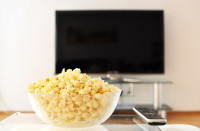Weekender
Keep calm and journal on
Steal some of your social media time to start journalling—one of the effective ways of self-care.
Kar Sangmo Dolma Syangtan
Oscar Wilde, Susan Sontag, Virginia Woolf, Sylvia Plath, Shawn Green, Mary Chestnut, Brian Koppelman, Franz Kafka, Martina Navratilova, and Ben Franklin. All journalers—just to name a few. Journalling to them was a way to be creative and purge the mind of agitation. With the lockdown lengthening, many have channelised their unused energy to both trivial and significant matters to shut the gaping hole in quarantined life. And what is a better way to recount the quarantine adventures that never took off 40 feet from the radius of your room for a trip down the memory lane years later? Journalling.
Your journal entries need not necessarily start with how productive your day was. Suvechchhya Pradhan, 27, who started keeping journals in her teenage years after watching the movie ‘Confession of a Teenage Drama Queen’, says, “I loved and still love movies and books with first-person narration. I enjoy watching the world from the protagonist’s point of view.” This fondness urged her to start writing her own narration. “It felt like reading a diary and I wanted to have something like that. I started with a rant journal, which is basically jotting down thoughts/feelings with words.”
Bhintuna Jyapoo from Bhav Products & Stationery Udhyog unfolds her younger experience. “I might have started journaling when I was asked by my father to write about the long winter vacations I used to have in Butwal, back when I was in school,” she adds, “He is more of a diary keeper and also he wanted me to work on my vocabulary and handwriting.”
“On some occasions, I journal in (long) paragraphs pouring my heart out on the piece of paper or in my notebook when something significant occurred in my life,” says Bhintuna, “The intention is to lighten my heart than to record. Sometimes when I’m reorganising my room, like during this lockdown, I would find these papers hidden inside my old notebooks.”
“Journalling, to be honest, helps me keep sane. I also realised it helped me in letting go of things bugging my head once I poured out,” Suvechchhya points out correspondingly, “It has helped me clear my head, get over obsessive thoughts and even understand why I’d been feeling a certain way.”
Journalling isn’t a new topic, many of us have tried it at some point and quit it after a few entries. It is understandable how easy it is to lose interest and consistency. So how do some people go on with it for years and sometimes, for the rest of their life?
“Well, the idea that I don’t necessarily have to follow it like a rule keeps me going,” says Suvechchhya, “I think one way to not make it feel like a chore is to take it as a hobby and to use various mediums.”
The idea that the only way to keep journals is through writing puts people who are not into writing feel like a chore. “Generally, we think of ‘journalling’ as a perfect paragraph with proper words, handwritings, few stickers and cartoons scattered on the paper,” says Bhintuna, “Personally, I think we can journal with one symbol, colour, word or a sentence. I am more of a listmaker. For example, throughout April I used a blue ink pen. Blue calms me down. I drew smileys—:D for a productive day, :) for a happy day and :| for gloomy days. I listed what I did—the cleaning, cooked pasta, and designed a cover :D. If I had not done anything on that day I would just list—daydream, watched a movie, video call a friend :). It is simple and can be as simple as that.”
“I think if you want to get back to journaling or start on it, then you need to have an open mind,” Suvechchhya adds, “Be as much flexible as you can be, regarding both content and medium and don’t forget to be inspired by other journaling fellows out there. Pinterest is a huge help, and so is Instagram.”
While all those YouTube videos on creating the perfect planner and aesthetic scrapbooks may come off a little too intimidating as if they have to look pleasing, Bhintuna says, “Many of my customers would express their difficulty in maintaining their journals and complained they are not the creative type.” Also addressing the issue many face, Suvechchhya suggests, “To make it creative and fun, I would say, EXPERIMENT. You don’t have to like writing or doodling. You can use various prompts if you don’t know what to journal about. You can use scrap papers including magazine cut-outs, newspapers and even wedding cards and wrappers, and threads, and dried flowers, and photos, and anything you take fancy on. And you can either make a collage or flow charts or lists or pasting cut-outs or anything.”
Bhintuna, on the other hand, suggests, “I would always suggest them to choose a notebook they like with a pen they love. Write whatever that comes in their mind or summarise their day in a word or sentence. Continue for a few weeks giving a minute to 10 minutes a day, with practice (and patience) they will find their own style.”
“There are many types of journals one can try in this lockdown—Morning Journal, Prayer Journal, Dream Journal, Gratitude Journal, Bullet Journal, Food Journal, Art Journal, Favourite Journal, Workout Journal, Garden Journal, Reading Journal, Writing or Poetry Journal, Idea or Junk Journal. You can even combine all these Journals into one,” suggests Bhintuna.
Suvechchhya suggests you try out different headers, banners, and letterings and utilise the corner spaces of your journal. If you are not a straight paragraph person then list items visually with cut-outs and photographs—making Venn-diagrams for your goals, drawing out mind-maps on how you want things to go.
Most important of all, do not forget to date your entries. You will only have a vague idea of when things happened in case you want to go back to certain things over the years. This also lets you keep your personal growth and development over the years in check.




 18.37°C Kathmandu
18.37°C Kathmandu










